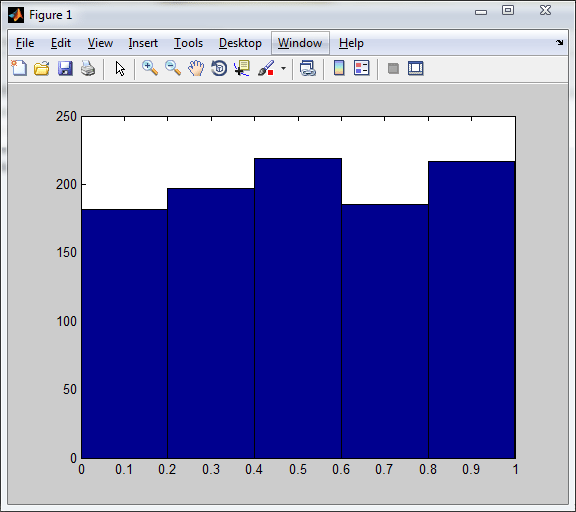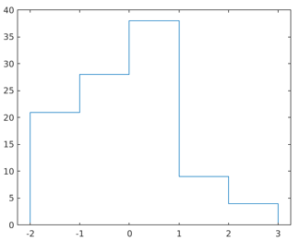

But you should not be over-reliant on such automatic approaches, because they depend on particular assumptions about the structure of your data. By default, displot()/ histplot() choose a default bin size based on the variance of the data and the number of observations. The size of the bins is an important parameter, and using the wrong bin size can mislead by obscuring important features of the data or by creating apparent features out of random variability. For instance, we can see that the most common flipper length is about 195 mm, but the distribution appears bimodal, so this one number does not represent the data well. N,Xedges,Yedges histcounts2 (X,Y,nbins) specifies the number of bins to use in each dimension.

This plot immediately affords a few insights about the flipper_length_mm variable. The histcounts2 function uses an automatic binning algorithm that returns uniform bins chosen to cover the range of values in X and Y and reveal the underlying shape of the distribution. displot ( penguins, x = "flipper_length_mm" ) Histogram matching is concerned with transforming one images histogram so that it looks like another. A histogram is a bar plot where the axis representing the data variable is divided into a set of discrete bins and the count of observations falling within each bin is shown using the height of the corresponding bar:
MATLAB HISTOGRAM CODE
This is the default approach in displot(), which uses the same underlying code as histplot(). Perhaps the most common approach to visualizing a distribution is the histogram. It is important to understand these factors so that you can choose the best approach for your particular aim. There are several different approaches to visualizing a distribution, and each has its relative advantages and drawbacks. They are grouped together within the figure-level displot(), jointplot(), and pairplot() functions. The axes-level functions are histplot(), kdeplot(), ecdfplot(), and rugplot().

The distributions module contains several functions designed to answer questions such as these. I have two matrices with different size, one is 3000 x 1 other one is 6000 x 1. What range do the observations cover? What is their central tendency? Are they heavily skewed in one direction? Is there evidence for bimodality? Are there significant outliers? Do the answers to these questions vary across subsets defined by other variables? Techniques for distribution visualization can provide quick answers to many important questions. See the code below.An early step in any effort to analyze or model data should be to understand how the variables are distributed. The imhist() function will return the histogram count and location of bins, and also it will plot the histogram.įor example, let’s use the imhist() function to calculate and plot an image’s histogram. First, we must read the image using the imread() function and then pass it inside the imhist() function. We can use Matlab’s built-in function imhist() to calculate an image’s histogram. We can also spot noise, clipping values, and background at a glance using the image histogram.

In a histogram, we show the color values present inside an image to check the distribution of colors in an image.įor example, we can check which color is present in abundance and which color is rarely present in an image. An image contains pixels that contain color values. Image histogram shows the graphical representation of pixel color distribution present in a digital image. Calculate an Image’s Histogram Using the imhist() Function in MATLAB This tutorial will discuss calculating an image’s histogram using the imhist() function in Matlab.


 0 kommentar(er)
0 kommentar(er)
